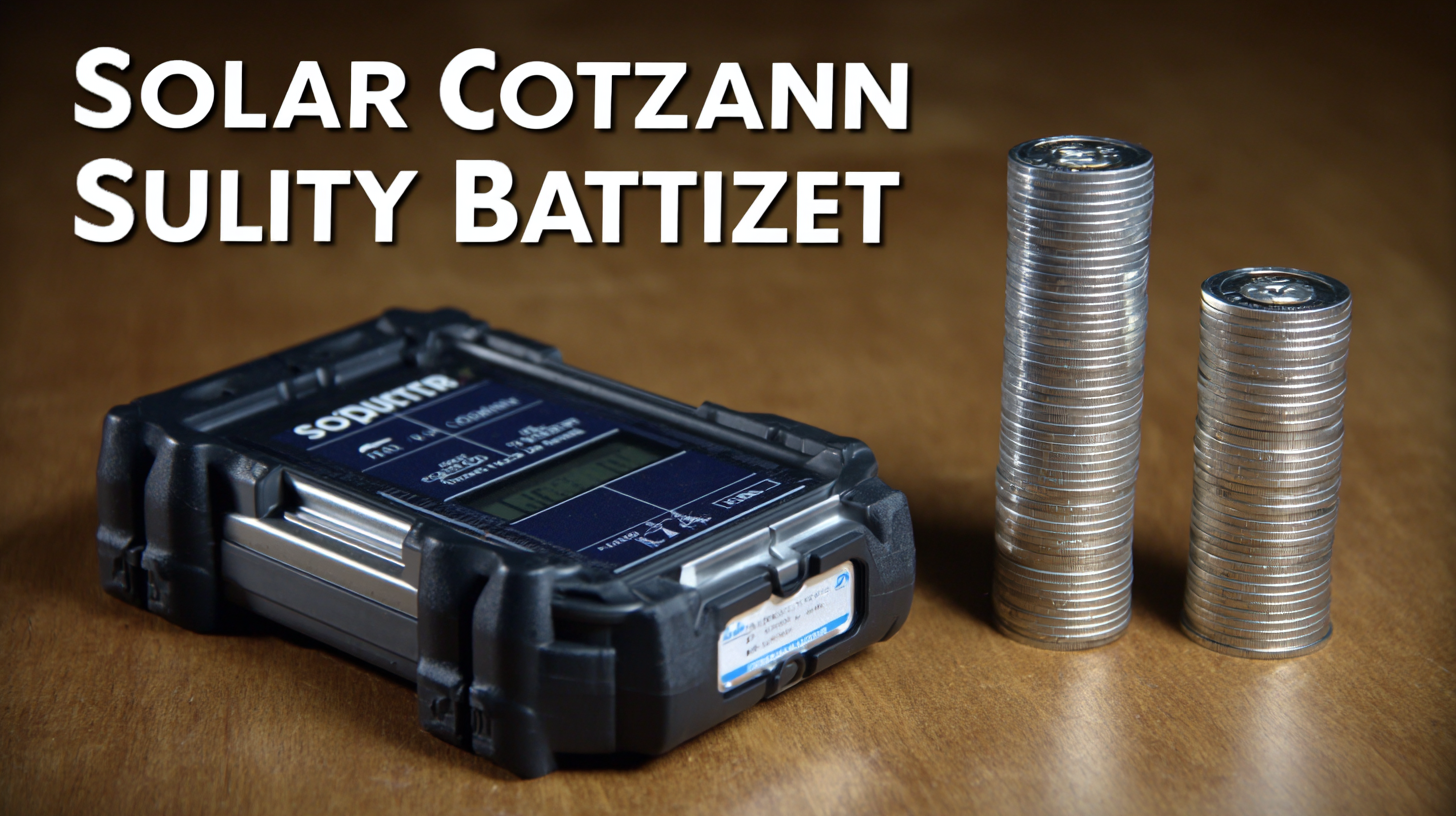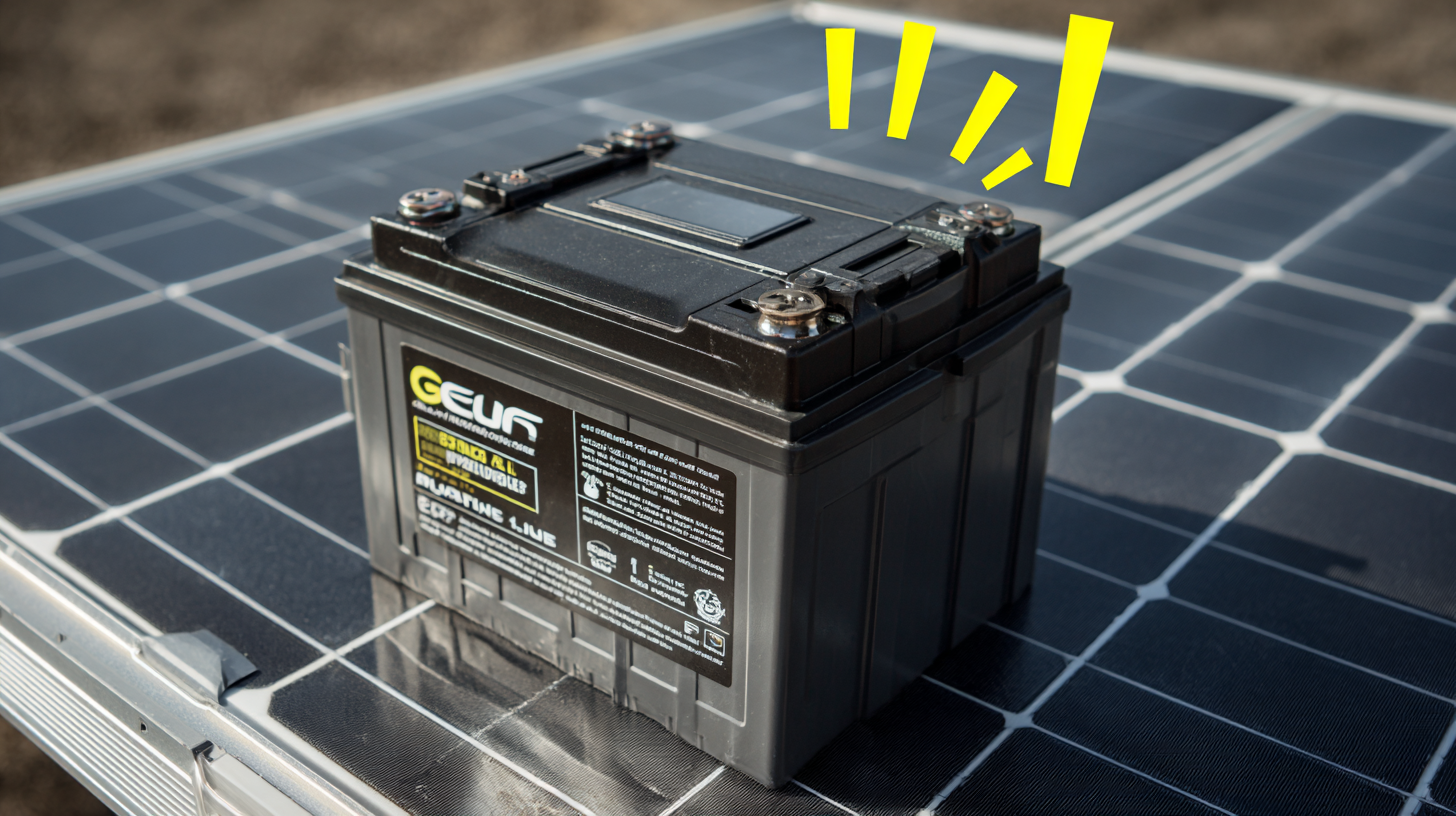As the renewable energy sector continues to flourish, optimizing your investment in solar power solutions is increasingly vital, particularly concerning Solar Battery Cost. According to a 2022 report by BloombergNEF, the average cost of lithium-ion battery systems has decreased by 89% since 2010, making energy storage more accessible for homeowners and businesses alike. The International Energy Agency (IEA) predicts that the global market for energy storage could reach 1,000 GWh by 2040, indicating a significant shift towards sustainable energy management.

With solar batteries playing a crucial role in maximizing solar panel efficiency and reducing reliance on the grid, understanding effective strategies for investment is essential. By delving into the best practices for managing Solar Battery Cost, consumers can enhance their return on investment while contributing to a greener future.
When considering solar energy systems, understanding the different types of solar batteries and their costs is crucial for optimizing your investment. Solar batteries serve as the cornerstone of any solar panel setup, enabling users to store excess energy generated during sunny periods for use during off-peak hours. The market analysis indicates that lithium-ion batteries are leading in popularity due to their high energy density and cost efficiency. They not only offer substantial storage capabilities but also ensure that homeowners can capitalize on their solar investments.

As various battery options become available, determining the right type involves a balance between upfront costs and long-term benefits. For instance, vanadium flow batteries present an intriguing alternative, especially for those seeking longevity and extensive capacity. However, the choice between these technologies ultimately depends on individual energy needs and local conditions. With the solar battery market projected to expand significantly from 2024 to 2030, consumers must be informed about the features and pricing of each option to make the most financially sound decision as they transition to renewable energy sources.
When considering solar batteries, evaluating your energy needs is crucial to selecting the right battery size for your system. Start by analyzing your daily energy consumption. Review your electricity bills to determine how much energy you use on average each day. This data will serve as a foundation for understanding how much energy you’ll need to store for nighttime usage or during power outages.
Next, consider your energy goals. Are you looking to become completely off-grid or simply reduce your reliance on the grid? This decision will influence the size of the solar battery you require. If your goal is to power essential appliances during outages, a smaller battery may suffice. However, if you're aiming for energy independence, investing in a larger capacity battery that can handle your daily needs and provide a buffer for unexpected surges is wise. By carefully assessing both your current energy habits and long-term goals, you can make a more informed choice that maximizes your investment in solar technology.
This bar chart illustrates the cost of solar batteries based on different sizes measured in Amp-hours (Ah). As battery size increases, the cost also increases, showing a clear trend for consumers evaluating their energy storage needs.
When looking for the best solar battery deals, understanding market pricing is crucial. Recent industry reports indicate that prices for solar batteries have decreased by nearly 50% over the past five years, making renewable energy storage more accessible than ever. A 2023 report by the International Renewable Energy Agency (IRENA) shows that average prices for lithium-ion batteries have fallen to around $137 per kilowatt-hour (kWh). This decline opens up new opportunities for consumers to invest in solar energy systems that can save on electricity costs in the long run.
To secure the best deals on solar batteries, it’s essential to compare prices across various suppliers and consider the total cost of ownership, which includes installation, maintenance, and warranty options. According to the Energy Storage Association, the projected growth of the residential solar battery market is expected to exceed 10 GW by 2025, highlighting fierce competition among manufacturers. Consumers can benefit from this competition by researching customer reviews and seeking quotes from multiple vendors, ensuring they capture the best possible price on high-quality solar battery solutions that fit their energy needs.

When it comes to solar battery installation, maximizing efficiency is crucial for getting the most out of your investment. One of the first steps is to assess your energy needs accurately. This involves understanding your daily energy consumption and the potential energy your solar panels can produce. By conducting a thorough analysis, you can choose the right battery size and type, ensuring that your system can store enough energy for your usage patterns, especially during peak times.
Another important aspect of installation is the strategic positioning of your batteries. Ideally, solar batteries should be placed in areas with optimal temperature control and ventilation. Extreme temperatures can significantly impact battery performance and lifespan, so consider installing them in a climate-controlled space if possible. Additionally, ensuring that your solar panel system is correctly configured will facilitate efficient energy transfer between the panels and the batteries, further enhancing performance. By following these installation tips, you can optimize the efficiency of your solar energy system, making your investment in solar batteries pay off in the long run.
Investing in solar batteries has become increasingly popular as homeowners and businesses seek to enhance their energy independence and mitigate rising utility costs. According to a report by the National Renewable Energy Laboratory, the average payback period for solar battery systems ranges between 5 to 10 years, depending on factors such as local energy prices and available incentives. With the cost of lithium-ion batteries projected to drop by approximately 60% by 2030, the financial viability of these systems is improving, making long-term savings more attainable.
In addition to the immediate savings on energy bills, integrating solar batteries can significantly increase property value. A study from the Lawrence Berkeley National Laboratory found that homes equipped with solar energy systems, including battery storage, can sell for up to 4.1% more than comparable homes without solar. This increased property value, combined with potential savings from net metering and time-of-use rates, bolsters the return on investment for solar batteries. Therefore, opting for a solar battery not only serves as an eco-friendly choice but also presents a compelling financial strategy for future savings.
| Battery Type | Capacity (kWh) | Cost ($) | Expected Lifespan (Years) | Annual Savings ($) | ROI (%) |
|---|---|---|---|---|---|
| Lead Acid | 12 | 1200 | 5 | 150 | 12.5 |
| Lithium-ion | 13 | 4500 | 10 | 300 | 6.67 |
| Flow Battery | 15 | 7000 | 20 | 250 | 3.57 |
| Nickel Cadmium | 10 | 3500 | 15 | 200 | 5.71 |
| Sodium-ion | 12 | 4000 | 12 | 225 | 5.63 |